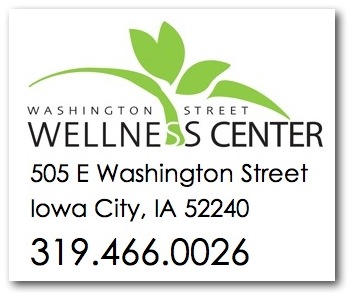
The Health Resource Group is beginning a study of best practices for delivering wellness services.
About Wellness Centers. There are independent Wellness Centers all over the world. These sometimes take the form of a spa or fitness center with expanded additional services. Wellness Centers with a medical focus are perhaps the most comprehensive and may offer thorough lab analysis, nutritional counseling, massage therapy, lifestyle concealing, acupuncture, chiropractic care, or a variety of other combined services designed to holistically produce greater vitality, health, stamina, and wellbeing. Sometimes those who aren’t feeling well, will seek the services of a wellness center. Yet many people who go feel fine, they just want to be proactive about feeling better.
Optimal Baseline. To explore this topic further, we will use the Washington Street Wellness Clinic of Iowa City as a baseline of an exceptional service provider. This assessment is based on patient experience with responsive service, quality products, effective planning, professional care, and measurable results.
Comprehensive. It’s helpful for a team of wellness providers to work collaboratively. Through teamwork, their collective knowledge grows. This translates into a richer and more effective experience to those who are seeking their services. For this reason, it’s beneficial to have a single facility that offers natural medicine, wellness coaching, personalized yoga, massage therapy, acupuncture, meditation, nutritional counseling, and similar complementary services.
Educational Center. Offering events to the public helps equip individuals with more knowledge about better-health life practices. For a wellness center, this places an emphasis on education and learning, which are generally proactive and preventative activities. Some people pursue wellness as an educational process, using their body and lab results as a text book for their journey.
Online Tools. Creating a dynamic and interactive experience helps engage those pursuing enhanced wellness. Services such as WaitingRoomSolutions.com allow wellness centers and their patrons to be partners in online education, personal documentation, and directed personalized wellness practices. In the context of healthcare, this provides a free online tool for patients to track their daily nutritional supplements, prescription drugs, and document their daily plan toward better health.
Process & Cost. For those unfamiliar with wellness center experiences, the process typically includes the following.
- Initial Consultation. The initial consultation with the doctor is an opportunity to review past medical history, any current concerns, and discuss future goals. The cost could be $500 to $600, though each person’s experience and cost can be different. This covers the doctor’s fee ($150 to $200) and cost of any lab work handled by the clinic (like saliva tests that could run $300 or more). There may be additional lab work done by a third party, like LabCorp.com, but that will usually be paid separately or covered by insurance.
- Lab Work. Most people will be enthusiastic about getting started right away. If lab work is being done, fasting is generally required. It’s sometimes easier to do blood work and saliva testing in a single day so you only need to have one day of fasting in the morning. If you’re going to a professional lab, the experience will likely be inexpensive, fast, and probably painless (for those who worry about needles). For saliva testing, samples are mailed to the lab. It usually takes a couple weeks to get lab results back.
- Second Consultation. The second consultation with the doctor is usually scheduled in about three weeks to allow for the lab results to return. During this consultation, the doctor discusses an analysis of the lab work, and how diet, supplements, and lifestyle can bring about positive changes. Even though some of the doctor’s recommendations may seem like home remedies, the entire philosophy and process is based on achieving precise and measurable scientifically-based outcomes. The second consultation may cost $300 to $400 for the cost of the doctor’s visit ($150 to $200) and supplements. The supplements prescribed may cost $150 to $200 which covers an extended period of time. These costs may be higher or lower depending on the person and what their needs are. It’s important to use the recommended supplements because they are standardized and the results are more dependable and familiar to the physician. For what you get, the cost is similar to products of equal quality ordered at discount online. Because absorption and bioavailabilty are an issue for many people, quality supplements are needed.
- Nutritionist. It’s common to meet with a nutritionist after a week of trying your new diet and lifestyle. The nutritionist can help answer any questions along the way. The cost might be anywhere from $30 to $100 depending on the rates and time billed.
- Wellness Lifestyle Coach. A wellness lifestyle coach can assist with questions about stress reduction and exercise.
- Feel Better & Repeat. Once through the first cycle, one simply returns for further testing to document the effectiveness of the process. Corrective action is taken as needed. Generally the time and money saved through proactive wellness approaches will be a smart investment when compared to the cost of illness that’s avoided later on.
Patient Perspective. Below are some articles about wellness center experiences. More articles are coming.
- Iodine Deficiency Outcomes: Hypothyroidism, Insulin Resistance, Hypertension, and Diabetes (20 April 2012)
- Obesity and High Estrogen Levels in Men: Symptoms, Causes, Testing, Crisis, Dangers, and Treatments (20 April 2012)
- Practices, Habits, and Attitudes that Ensure Optimal Results from Wellness Centers (26 April 2012)
- Trumpet Blossom Cafe – Iowa City Vegetarian Restaurant – Just What the Doctor Ordered (25 April 2012)
